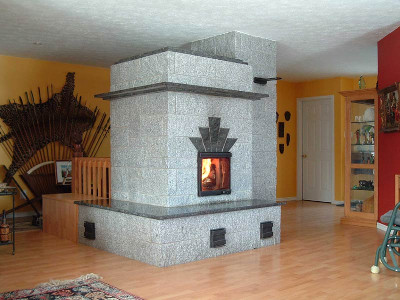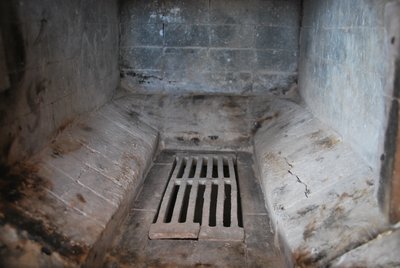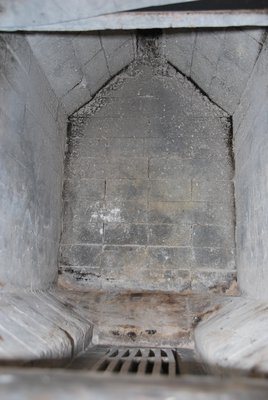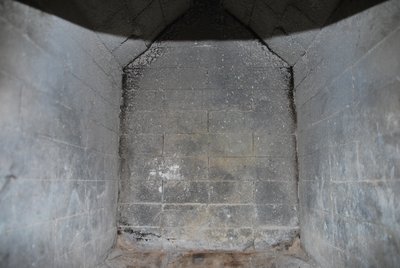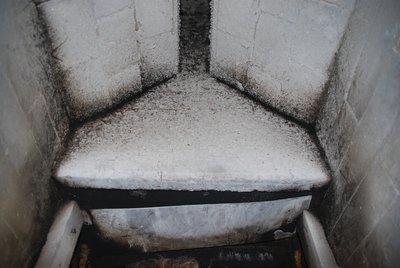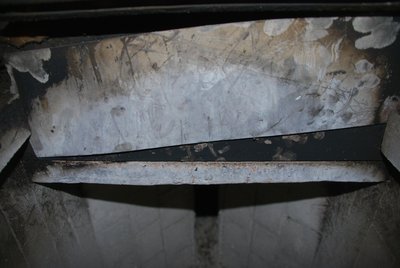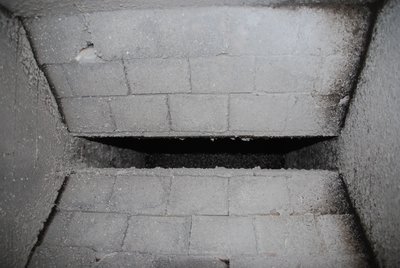Observations 18 Years Later #2 - Pyromasse.
These notes and images document the condition of a contra-flow Takka built in Deauville QC during the summer of 1995. The stove has been fired by a client originally from Lower Saxony, every day for 19 seasons.
The stove is fired with over air via an outside air duct.
Materials:
| Facing | Grey Stanstead Granite. Quarried 60km from the site. Black granite trim of unknown origin. |
|
| Refractory Brick | AP Green PCP-C | |
| HTC | AP Green Greenpatch 421 | |
| Castable | AP Green. Type Unknown |
All images below have an HD option. Click on image.
The fire box is built in traditional style its walls consisting of a single wythe of brick layed flat. Today most contra-flow fire boxes are built with walls consisting of 2 independent wythes of shiners. This offers a possibility of replacing the inner wythe should the surface of the brick ever become badly spalled.
Note : The steel sheet is seen here twisted diagonally out of place, to expose the composition of the lintel for the image.
Interesting is a comparison with the surface of the material in the fire box of the stove detailed here: Observations 18 Years Later #1 with what can be seen in this example. Both stoves were assessed after 18 seasons of regular use by conscientious clients, heating a similar sized house with similar wood. Neither stove has an upper chamber oven.
The stove shown in the above article, Observations 18 Years Later #2, is fired with over air. The stove detailed in Observations 18 Years Later #1 is fired with under air.
The only other variable is in materials which are not of the same origin. Obviously a considerable variable, making comparative observation of the two cases only vaguely conclusive.
Marcus Flynn
2014
